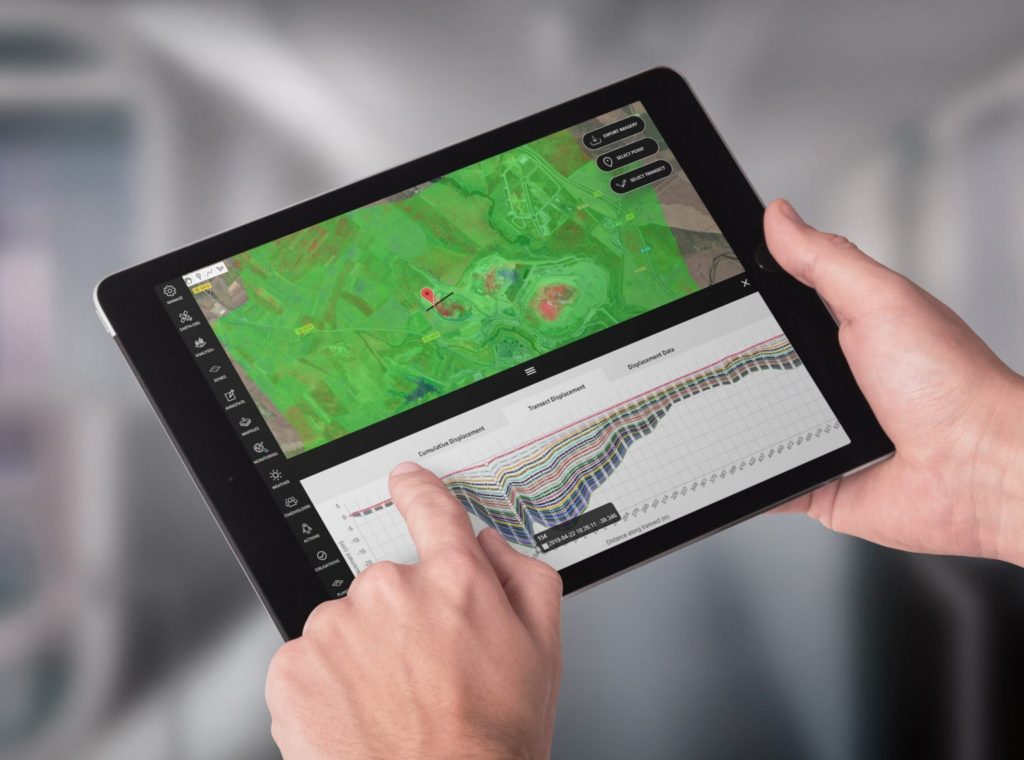Born within the Industrials Division of Wesfarmers, Decipher is a new Software-as-a-Service company delivering cloud solutions that help drive sustainability, productivity and improvements across mining, including tailings storage facilities. Utilising remote sensing data, environmental analysis, monitoring and reporting, Decipher told IM it is helping Tier 1 mining companies drive progressive mine rehabilitation and tailings dam monitoring.
Decipher is also currently involved in the CRC on Transformations in Mining Economies (CRC-TiME) project, alongside over 70 other industry partners including BHP and Rio Tinto which aims to help regional communities transition to a sustainable future after local mines have closed. CRC-TiME was recently the successful recipient of A$29.5 million in Commonwealth funding. Federal Minister for Industry, Science and Technology, Karen Andrews announced that the funding forms part of a total 10-year investment of A$135.4 million.
Decipher CEO, Anthony Walker, says the Brumadinho TSF failure in Brazil was one of the culminating catalysts for a new global approach around tailings impoundment monitoring. With an estimated 3,500 active TSFs across the globe covering approximately one million hectares of land, and an increasing number of failures occurring and being recorded, it was clear that a fresh look at the reporting and monitoring of these facilities was needed. “We know there is good practice in the sector, but it is the corporate responsibility of all mining companies to ensure everything possible is being done to prevent further failures from occurring,” said Walker.
Just two days after the tragic event in Brazil, a group of investors co-led by the Church of England Pensions Board and the Swedish Council of Ethics of the AP funds announced The Investor Mining and Tailings Safety Initiative. The Initiative called upon 727 extractive mining companies to disclose information in relation to their TSFs to form a central independent portal and classification system enabling the public to monitor the safety risk of mining companies tailings dams. A year on from the Brazil disaster, the Global Tailings Portal, built by Norway-based GRID-Arendal as part of the Investor Mining and Tailings Safety Initiative, was launched at the Global Tailings Summit in London in January, 2020. “Until recently, we had no clear indication on the number of facilities around the world, their locations or the quantity of tailings. Now thanks to the Global Tailings Portal, we have more transparency across the industry and greater insight into approximately 764 mine sites and 1,938 facilities.”
“Decipher is really excited by this concept and we believe we have the technology to make a positive contribution to the reporting and monitoring process,” explained Walker. The Decipher platform offers a comprehensive and functionally rich solution which combines a central repository for historic data, regulatory technology, environmental monitoring and evaluation tools including satellite derived earth observation data, stakeholder engagement, and a reporting suite. “We saw the opportunity to apply this revolutionary technology to provide mining companies with key data driven information and insights around monitoring TSFs,” says Walker. “It seamlessly integrates functionality and data across regulation technology and monitoring technology into one central platform to allow our clients to focus on compliance, best practice, integrated monitoring information and efficient decision making.”
Reflecting on the launch, Walker said Decipher has had a fantastic response to their tailings solution. “We’ve welcomed a number of Tier 1 mining companies onboard and we continue to receive extremely positive feedback indicating that Decipher is an industry leading solution for tailings, data capture, monitoring, reporting and compliance with the Investor Initiative and other industry bodies. We are one of the few companies to focus on rehabilitated sites and we’re really looking forward to working with our clients to continue adding to the database and reducing the risk of TSF failures,” he added.
Professor Baker from the Director of the GRID-Arendal (Sydney Office) and one of the key driving forces behind the Global Tailings Portal, believes the portal could save lives. “The publicly listed mining companies were asked a series of questions which covered a range of topics including whether they had any tailings dams, type of construction, how much material was currently being stored and how much they estimate to store over the next five years, plans for closure, and provisions for the increase in extreme weather events. The portal now brings about a greater level of transparency.”
Talking about the CRC-TiME project in Australia, here Decipher’s world-class technology will provide key data and insights to facilitate progressive mine rehabilitation and deliver transformational change in mine closure. Walker says there are a significant number of abandoned mines across the country, and with a mining footprint that increased particularly in Western Australia throughout the 2000’s, he believes there is going to be a huge increase in mine closures in 10 to 20 years’ time. “Decisions about mine closure in Australia have tended to have little consideration of how the land might be used post-mining. However, this is beginning to change, particularly with increased stakeholder pressure, environmental concerns, and regulatory changes. It’s exciting and encouraging to see a cultural shift in the industry in recent years with an increased appetite for collaboration by industry, research bodies and government in this space. The CRC-TiME could not have come at a better time, and I’m really excited that we have the technology to help revolutionise the task of mine rehabilitation and closure and ultimately improve those rates of relinquishment of land.”
Echoing Walker’s thoughts, CRC-TiME Chief Executive, Guy Boggs says the consortium brings scale and coordinated investment to the world-class research currently being done in Australia. “Over the next decade, we believe we will see a reduction in mine abandonment, an increase in relinquishment and an increase in the diversity of post-mining land uses.”











